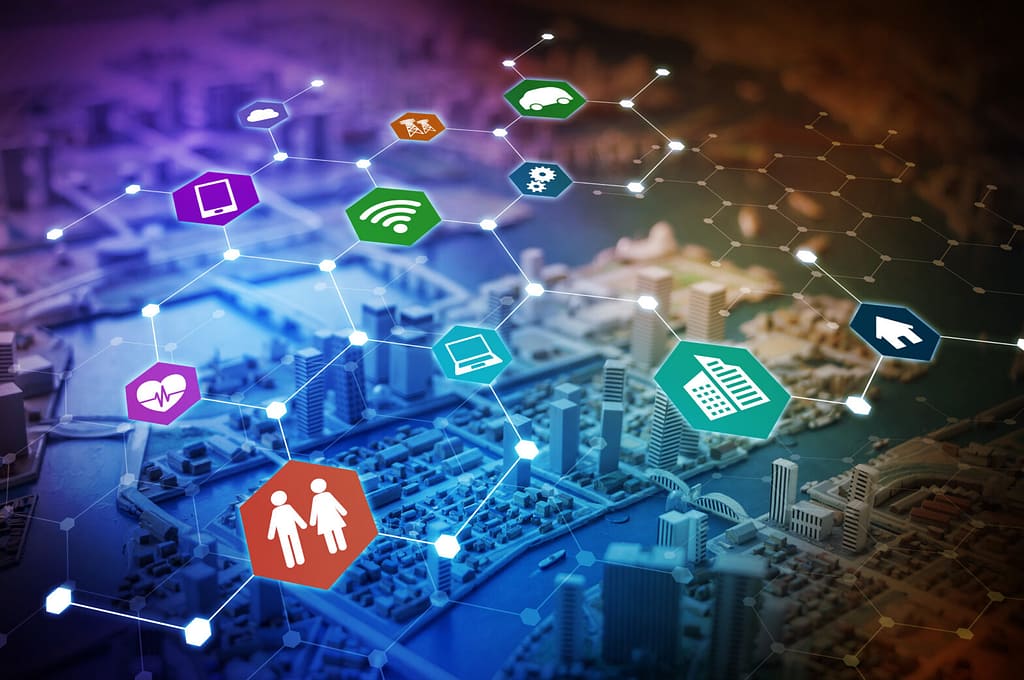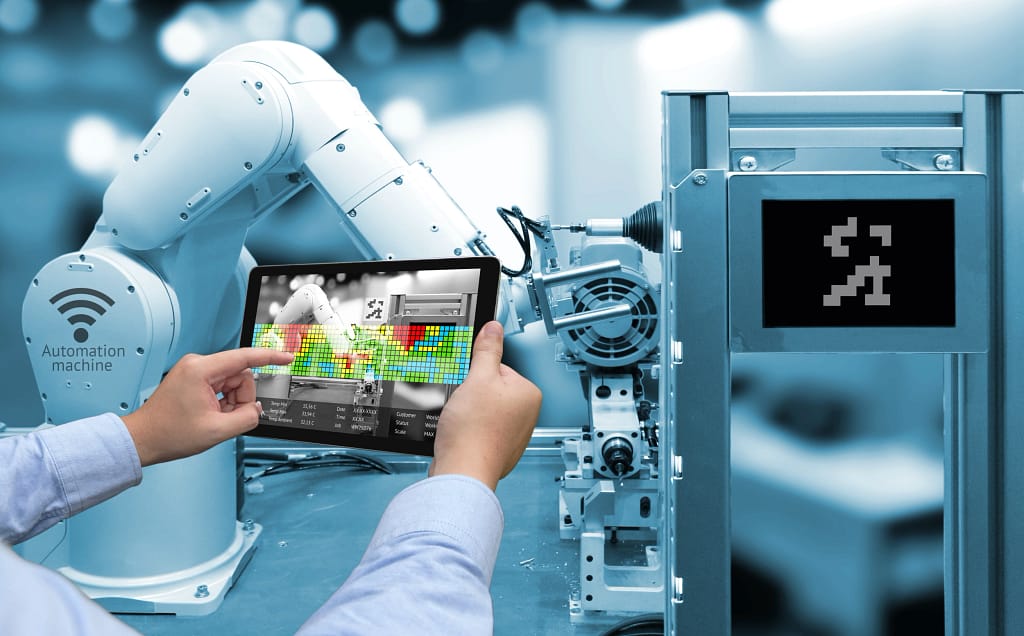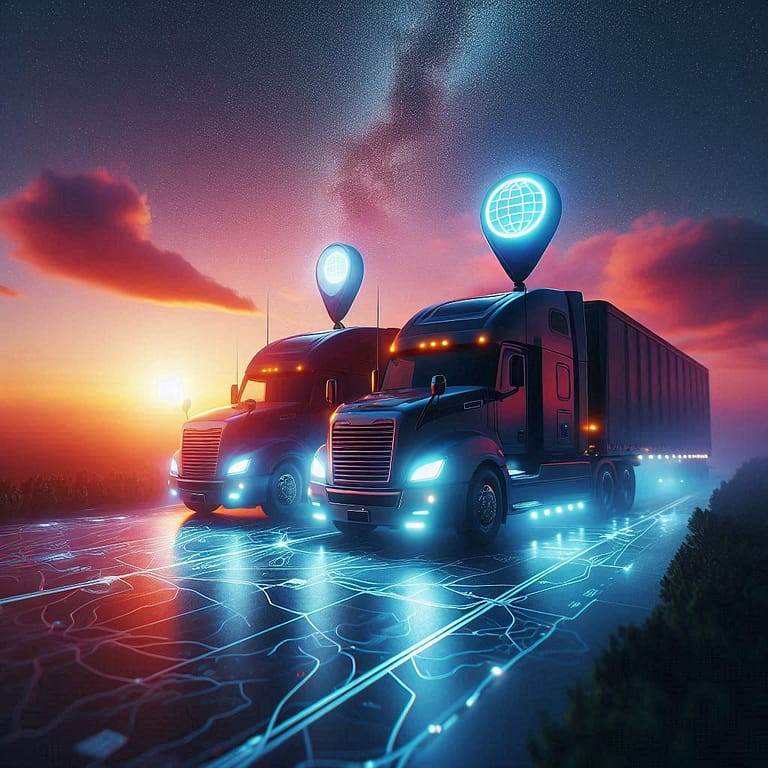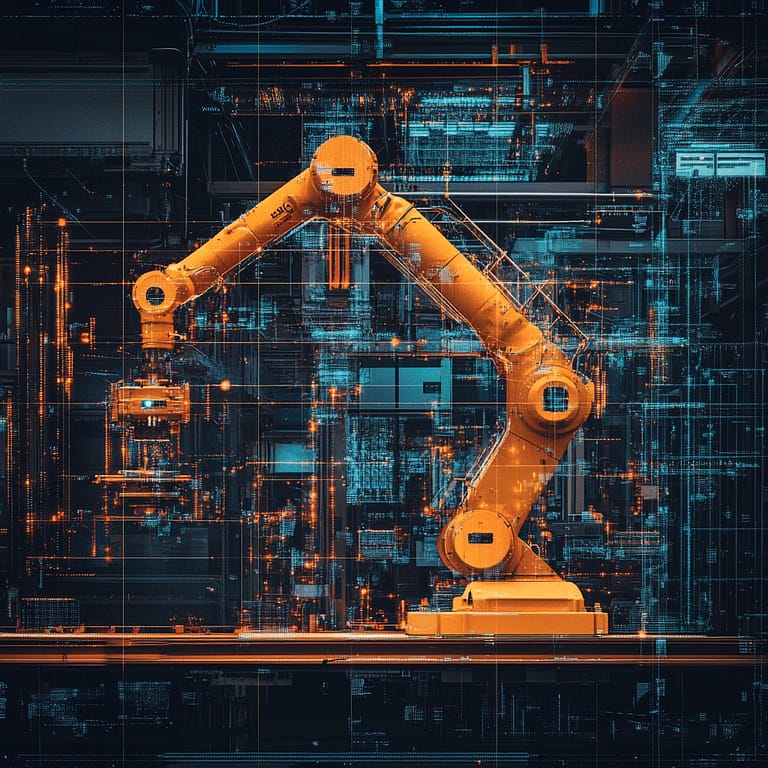What does IoT stand for? This acronym has become increasingly prevalent in recent years, and you might have encountered it in various contexts. But what does IoT stand for, and what does it encompass? In this article, we will delve deep into the world of the Internet of Things and explore its meaning, applications, and impact on our lives.
Be sure to follow the reading until the end to comprehend not only what it stands for but also its use in today’s industry, the challenges that it encounters, and what the future probably holds for this technology.
Read as well: Energy transport tracking – your key to CSRD compliance
Understanding the IoT: What does IoT stand for?
The acronym “IoT” stands for the Internet of Things, and it represents a transformative paradigm in the world of technology and connectivity. At its very essence, IoT embodies a vast network interweaving physical devices and everyday objects, which are meticulously embedded with many sensors, specialized software, and cutting-edge connectivity capabilities. These components collectively empower these devices to seamlessly collect, process, and exchange data among themselves through the vast expanse of the internet.

This intricate ecosystem of IoT encompasses a wide spectrum of tangible objects, transcending traditional boundaries and revolutionizing the way we interact with our surroundings. From commonplace household appliances, such as smart thermostats, fridges, and lighting systems, to the most innovative wearable gadgets that monitor our health and well-being, IoT touches every aspect of our daily lives.
Yet, it extends far beyond the confines of our homes, as it influences the very foundations of industries and infrastructure, infiltrating into industrial machinery, modern vehicles, and even entire urban landscapes in the form of smart cities.
In essence, IoT redefines the relationships between inanimate objects and their human counterparts. It imbues objects with a newfound sense of awareness, enabling them to react to the environment, collect and process data, and, importantly, communicate with other devices across the internet. This interconnected web of devices fosters an environment where data flows seamlessly, facilitating real-time decision-making, automation, and improved user experiences.
The evolution and story of IoT: From concept to reality
The concept of the Internet of Things (IoT) has evolved from a humble idea into a transformative technology that influences various aspects of our daily lives. The story behind IoT is one of innovation, interconnectedness, and the relentless pursuit of efficiency.
The origins of IoT can be traced back to the late 20th century when the world began to witness the emergence of the Internet. As the internet gained traction, visionaries and technology enthusiasts began to envision a future where not just computers but everyday objects could be interconnected. This marked the early seeds of IoT.
In the early 2000s, researchers and engineers started to experiment with the idea of connecting physical devices to the Internet. The first IoT devices were relatively simple, focusing on remote monitoring and data collection. For instance, smart vending machines that could report their stock levels and maintenance needs over the Internet were among the initial IoT applications.
The term “Internet of Things” was coined by Kevin Ashton in 1999. He envisioned a world where objects could communicate with each other and with humans, leading to greater efficiency and convenience. The idea gained momentum, and IoT slowly but steadily made its way into mainstream technology discussions.
One of the key enablers of IoT’s growth was the development of wireless communication protocols. Wi-Fi, Bluetooth, and cellular networks became more prevalent and accessible, allowing IoT devices to connect to the internet without the need for wired connections. This made it feasible for a wide range of devices to become part of the IoT ecosystem.
IoT found its initial commercial success in industrial settings. Manufacturers embraced IoT to monitor and optimize their production processes. Sensors on machines and production lines collected data, which was then analyzed to improve efficiency, predict maintenance needs, and reduce downtime. This application, often referred to as Industrial IoT or IIoT, laid the foundation for IoT’s broader adoption.
As the technology evolved, IoT extended its reach into other domains. Smart homes became a prominent application, where everyday household items such as thermostats, lights, and security systems could be controlled remotely through smartphones. Wearable devices like fitness trackers and smartwatches also emerged, allowing individuals to monitor their health and activities more closely.
Today, IoT is integrated into various aspects of our lives, from healthcare and agriculture to transportation and smart cities. The technology continues to grow, driven by ongoing advancements in sensor technology, connectivity options, and artificial intelligence.

Real-world examples of IoT applications
By this point, you already know the answer to “What does IoT stand for?” and the story of its creation. To further understand the scope and significance of IoT, let’s explore some real-world applications:
- Smart Homes: IoT has revolutionized the way we interact with our living spaces. Smart thermostats, lighting systems, and security cameras are examples of IoT devices that enhance convenience and energy efficiency in our homes.
- Healthcare: IoT plays a crucial role in healthcare, from wearable fitness trackers that monitor your vital signs to medical devices that allow remote patient monitoring. This technology can help individuals take control of their health and enable doctors to make more informed decisions.
- Agriculture: Farmers use IoT to monitor soil conditions, weather, and crop health. This data helps optimize irrigation, reduce waste, and improve crop yields. This is what we all call environmental monitoring.
- Transportation: In the automotive industry, IoT connects vehicles to the internet, enabling features like GPS navigation, real-time traffic updates, and remote diagnostics. This not only enhances the driving experience but also contributes to safer and more efficient transportation.
- Smart Cities: Entire cities are adopting IoT to manage resources more efficiently. Smart streetlights, waste management systems, and traffic control systems are just a few examples of how IoT can make urban life more sustainable and convenient.
- Manufacturing: IoT is transforming the manufacturing sector with the concept of Industry 4.0. Factories use IoT devices to monitor equipment health, predict maintenance needs, and streamline production processes.
These are just some examples that illustrate the diverse range of IoT applications and the positive impact it has on various aspects of our lives.
What does IoT stand for in the modern world?
As you can see, IoT is not just a buzzword – and now it is time to understand the importance it has! IoT has evolved into a crucial component of our interconnected world. Its significance can be understood from various perspectives:
1. Efficiency and Automation
IoT devices are designed to streamline tasks and processes. They can automatically adjust settings, provide real-time feedback, and trigger actions based on data inputs. This leads to increased efficiency and reduced human intervention in many areas, such as manufacturing, transportation, and agriculture.
2. Data-Driven Decision-Making
The vast amounts of data generated by IoT devices can be harnessed to make informed decisions. Businesses and organizations use this data to improve operations, enhance customer experiences, and develop innovative products and services. Data analytics and machine learning are integral to this process.
3. Environmental Impact
IoT has a role to play in reducing our environmental footprint. Through better resource management, it can help conserve energy, reduce waste, and minimize pollution. For example, smart grids can optimize energy distribution, and waste management systems can schedule pickups more efficiently.
4. Connectivity and Accessibility
IoT is breaking down barriers by connecting remote and underserved areas to the digital world. This is especially significant in rural healthcare, where IoT enables telemedicine and remote monitoring, improving healthcare access for those in remote regions.

What does IoT stand for: Conclusion
In short, the Internet of Things, often referred to as IoT, stands for a network of interconnected devices, sensors, and objects that collect and exchange data over the Internet. IoT applications are diverse, ranging from smart homes and healthcare to agriculture and smart cities. The importance of IoT is evident in its ability to enhance efficiency, data-driven decision-making, environmental impact, connectivity, and overall quality of life.
While IoT offers numerous benefits, it also presents challenges, including privacy and security concerns, data overload, compatibility issues, and ethical dilemmas. As the IoT landscape continues to evolve, we can expect to see developments in edge computing, 5G connectivity, AI integration, and sustainability efforts.
So, the next time you come across the term IoT, you can confidently answer the question, “What does IoT stand for?” It stands for a technological revolution that is shaping the future and transforming the way we live, work, and interact with the world.
If, as you’ve been exploring the story of IoT, you recognize the potential it holds for transforming your business and the way you operate within your industry, don’t hesitate to reach out to us. At Datanet IoT, we’ve witnessed firsthand how our environmental tracking solutions have propelled numerous companies to new heights. So, seize the opportunity to contact us today and embark on the initial stages of integrating this groundbreaking technology, propelling your company toward an innovative future!




